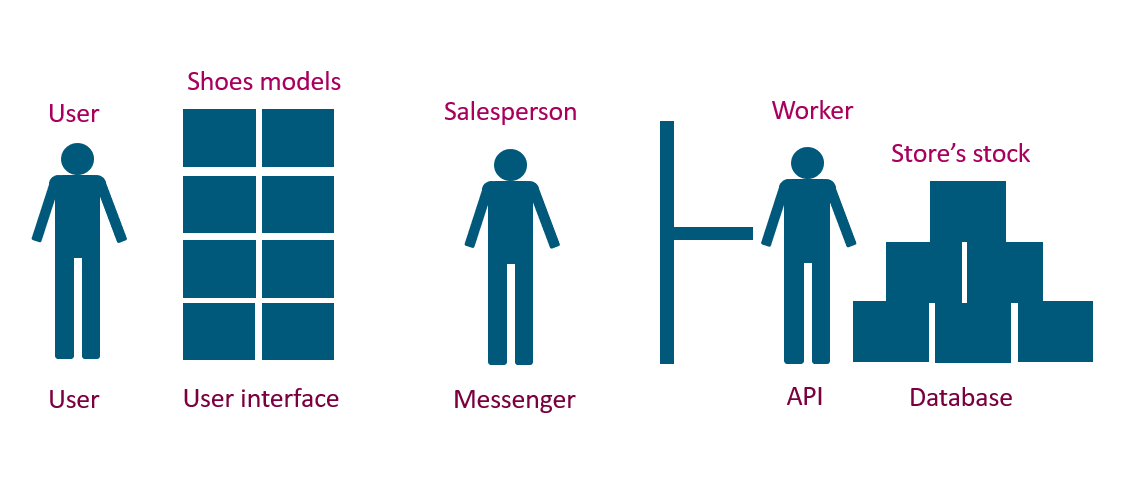What should I know about APIs in process automation?
Don’t feel bad if you’ve never heard of APIs (application programming interfaces). It’s a popular topic in IT but pretty new to OT. However, API is becoming essential to IIoT systems and brings plentiful possibilities for automation.
For a long time, OT (operational technology) and IT (information technology) were two different worlds. You and I on the automation side wouldn’t set foot on the IT side, and IT had very little to do with us. Of course, we sometimes had applications where we needed collaboration from both sides.
For instance, in a network with plant asset management (PAM) client and server solutions, IT usually came in to help out during the implementation. They made sure the firewall wouldn’t cause problems and provided servers to install the solution.
More recently, we have field networks on the OT level, such as PROFINET and EtherNet/IP, just like on the IT level. Here, we start to see field devices that need Ethernet cables rather than twisted pairs of wire.
And gateways are popular for integrated field devices in WirelessHART, HART, or even PROFIBUS on the IT level using Ethernet networks. These gateways transmit the field information in a standard Ethernet-based protocol, such as EtherNet/IP or OPC UA.
The Industrial Internet of Things (IIoT) concept has brought new ways to think about services in automation. Following the Namur Open Architecture (NOA) structure, the information comes from the traditional automation pyramid. You can use it with many services to add value on top of the data collected from the field.
What if you want to integrate this data from the cloud in another application? Or create your own service using this data? At this point, we meet the API and its power to make everything happen.
What’s an API?
API stands for application program interface, but what does it mean? Well, it’s a sort of computing interface that deals with multiple user requests to create, delete, and deliver information. An API can be customized to provide various features to users, depending on who’s developing it.
But we’re not quite clear about how it works yet, right? Okay, let’s try this analogy to explain.
Imagine you need a new pair of shoes. In the store, you see rows upon rows of models from the brand you want, but you want a particular color and of course, you need it in the right size. When you ask a salesperson for help, that person goes to check the store’s stock and brings back a pair of shoes in the color and size you requested.

So with an API, you’re the user, looking for specific information from the options available. The salesperson is the messenger, collecting your requests and bringing the answers. And the stock is the API that processes the requests and delivers the results.
Another closer example would be those sites that help you find a flight. On the site, you fill in the form with data like your departure and arrival dates, the airports you want to use, the seating you prefer, and so on.

When you hit send, the website contacts multiple APIs working for various companies. Those APIs return with all your options based on your requirements. Some sites even allow you to book the flight, use coupon codes, and more.
APIs are already intricately knitted into our online lives; many services have used them for years. But because they run behind the scenes, we benefit from their implementation without ever knowing it.
How does an API work for process automation?
APIs offer tremendous opportunities to add value to your applications. One example is the Netilion Connect from Endress+Hauser, with its secure yet easy-to-use REST/JSON API.
The Netilion Connect system usually involves an edge device, cloud, and API, but you can also apply it without the edge device. The service also offers authentication and authorization to guarantee the reliability of the service. Best of all, you can try it out for free. Cool, huh?
All the data collected from the field using an edge device is available to users in a secure environment. You can use this data in different ways with unlimited possibilities. You can even create an application that collects data from the cloud using the API.
As an example, what if you want to use your smartwatch to give you the status of your instrumentation? Or notify a team member that you’re forwarding a problem and remedy? Or customize your dashboard with device information and push process values into performance analysis? These types of applications are possible using the API.
Three months ago, the OPC Foundation presented a demo using OPC UA and API to show how easy it is to collect data and use it in different places. The demo ran on WordPress and interfaced with the API there. The sky’s the limit when it comes to where and how we can use APIs, and automation is no exception.
IT and OT are merging more and more, making knowledge such as coding in JavaScript and JSON essential to the vast majority of people in automation. Right now, you can try it out for free with the Netilion Connect system and create your own application using a real API for process automation.
If you learned something useful from this article, please share it with your colleagues on social media using the #Netilion tag.
Stay safe, and have a good one!



